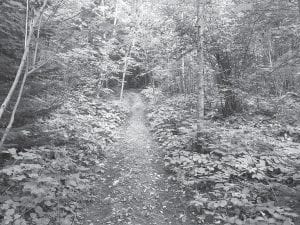Superior National Forest managers are still accepting public comment on a Roads Study that will help determine a sustainable road system which the U.S. Forest Service says will provide both safe travel for visitors and protect forest resources, such as water quality.
Road maintenance needs continue to grow across the Superior National Forest as funding for road maintenance continues to decrease. Nationally the Forest Service has more than 380,000 miles of roadways under its jurisdiction. Originally forest roads were constructed for loggers so they could harvest and truck wood to sawmills. Today roads are still used for timber harvesting, but many people use them for recreation purposes (hiking, biking, skiing, snowshoeing, hunting, etc.) as well as for mining, and driving for pleasure.
In the year 2000 the Forest Service had a backlog of $8.4 billion in maintenance and reconstruction projects and was only receiving 20 percent of its annual maintenance funding needed to keep up roads to environmental and safety standards. Funding for road maintenance has been continually slashed. In 1988, the Forest Service received more than $297 million to plan, reconstruct, construct, and maintain roads. Ten years later it received $187 million to accomplish the same things.
According to the Forest Service, it also must deal with more than 60,000 miles of unauthorized roads on national forest lands that do not meet technical standards and may pose danger to the environment and pose potential safety threats to the users.
The Roads Study addresses these concerns. Recommendations for future roads management are displayed on 10 maps and in an accompanying summary table that identifies roads that may not be needed in the future (likely not needed) and describes possible changes to existing roads (likely needed with changes). Changes could include a different road classification or even a transfer of jurisdiction.
The study and public comments are intended to provide recommendations for a future road system that considers access for forest management activities and for public uses, minimizes environmental impacts, and is more affordable.
The Forest Service currently maintains approximately 2,500 miles of roads within the Superior National Forest. In summary, the Roads Study recommends change to 158 miles of forest roads. Changes range from closing roads, changing maintenance levels, or changing jurisdiction of roads.
The Forest Service encourages input from all members of the general public as well as Tribes, partners, non-governmental organizations, and other agencies. Communications from the public, including commenters’ names and contact information will be compiled as part of the public record and will be provided to environmental analysis teams for consideration in future, more in-depth analyses.
A Roads Study Report will be completed by October 2015. To be included in the Report, public comments must be submitted before May 22, 2015.
To view the Roads Study maps and table and to learn how to provide comments, please visit the Superior National Forest website: www.fs.usda.gov/superior.



Loading Comments